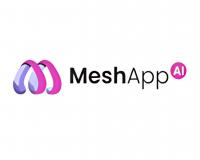Tips for Getting Started With RFP Management

Managing Requests for Proposal (RFP) can be daunting for many businesses. Yet, this's critical. It's securing new contracts and expanding company reach. Understanding how to approach RFPs methodically can transform this challenge into a successful strategy for growth. Business article organizations will explore essential tips to help you get started with RFP management effectively and efficiently. Keep reading to learn the techniques that could be pivotal to Tess's future success.
Understanding the Fundamentals of RFP Management
Navigating the world of RFPs begins with clearly understanding what an RFP is and its significance in business. An RFP is a formal document that an organization issues to solicit bids from potential suppliers for a specific product or service. This process allows the requesting party to compare offerings and assess which vendor can best fulfill their needs at a competitive price.
Efficient RFP Management lays the groundwork for streamlined communication between all parties. It ensures that the requesting organization receives comprehensive and comparable proposals, allowing for an apples-to-apples comparison during the evaluation stage. Fundamentally, RFP management is about creating a level playing field for vendors while ensuring the buying requirements are articulated and met.
The RFP process involves several steps—preparation, issuance, receipt of proposals, evaluation, and finally, awarding the contract. Each step must be executed with precision and attention to detail to avoid missteps that could affect the outcome. This is where establishing a robust RFP management framework proves invaluable.
Establishing Clear Goals and Objectives for RFP Responses
Setting clear and achievable goals is a foundational element of successful RFP management. Before embarking on creating an RFP, it is crucial to determine the primary objectives for the procurement at hand. These could range from cost savings and improved service quality to innovation and building strategic partnerships.
Objectives should be SMART—specific, Measurable, Achievable, Relevant, and Time-bound. This framework helps focus the RFP on the results that matter most and ensures that the responses can be objectively compared. Without SMART objectives, the evaluation process can become bogged down by subjective judgments and indecisiveness.
Goals and objectives guide the writing of the RFP document itself. They dictate the questions asked and the information requested from the vendors. These must be aligned with the company’s overall strategy to ensure the selected vendor can genuinely add value to the organization's company's operations or offerings.
Building an Effective RFP Response Team
Success in RFP management largely depends on the expertise and effectiveness of the RFP response team. Assembling a team with diverse skills—from procurement specialists to technical experts and project managers—is crucial in covering all the bases of an RFP's requirements.
Ensuring that your RFP team has well-defined roles and responsibilities is critical. This includes appointing a project lead to oversee the process, subject matter experts to provide insight on technical specifics, and writers and editors to ensure that RFP responses are clear and professional. Each member should understand their function in the team and how it contributes to the collective goal.
Communication among team members is vital. Regular meetings to update on progress, brainstorm solutions, and consolidate feedback from different team members help keep the RFP process on track. This collaborative approach can significantly increase the quality and competitiveness of the final RFP submission.
Streamlining the RFP Process Through Technology

In our fast-paced digital age, leveraging technology to streamline the RFP process is not just a convenience—it's a necessity. Numerous software solutions can assist in managing RFPs, from document creation to collaboration and evaluation. These tools can significantly reduce the administrative overhead of managing RFPs manually.
Software platforms provide a centralized location for all RFP-related documents and communications, which improves organization and accessibility for team members, no matter their location. Advanced systems can even offer proposal scoring features to aid in objectively evaluating responses against the set criteria.
Overall, embracing RFP management as a disciplined and strategic process can yield significant rewards for businesses of all sizes. By following these carefully outlined tips and insights, organizations can improve their RFP processes, fostering more effective procurement and enhanced relationships with vendors. As the marketplace evolves, so must our approaches to these critical business operations—and mastering RFP management is a surefire way to stay ahead of the curve.






